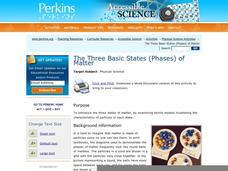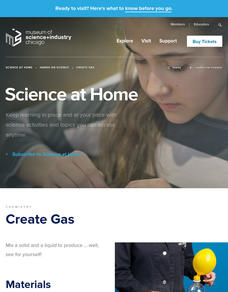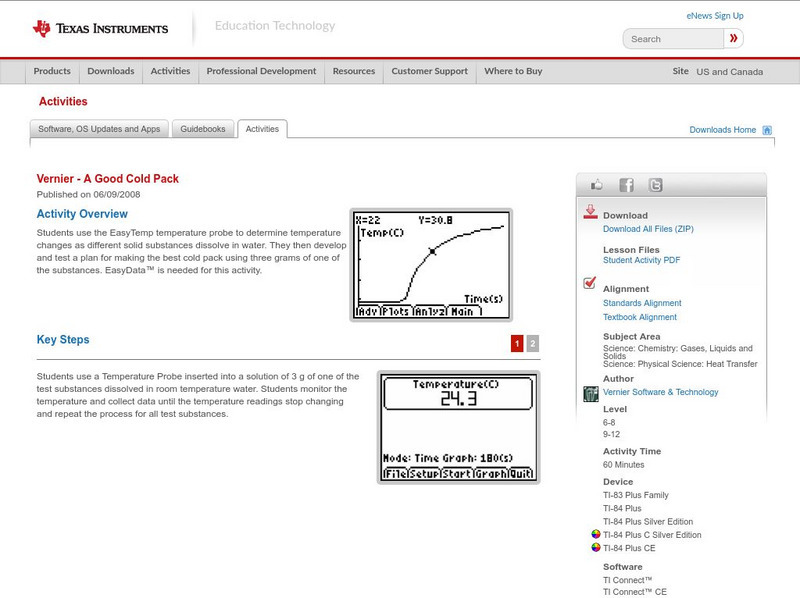Perkins School for the Blind
The Three Basic States (Phases) of Matter
There are three basic states of matter: Solid, liquid, and gas. Help your learners with visual impairments to understand the chemical nature of each state of matter with tactile elements. Marbles are used to model the particles in each...
Center for Learning in Action
Gases
Explore the properties of gases through one activity and two investigations in which super scientists observe the changes gas makes when encountering different conditions.
Resources for Educators
Math & Science Connection
Whether you're using a collection of Dr. Seuss books to teach basic math skills like counting, adding, and subtracting, or exploring the different states of matter by melting a crayon with a hairdryer, a series...
Museum of Science
Create Gas
Let's have a gas. Individuals mix baking soda and vinegar in a bottle. Learners view the interaction between the solid and the liquid and notice that a gas is formed. Scholars notice the gas inflates a balloon stretched across the mouth...
American Chemical Society
American Chemical Society: Science for Kids: Solids, Liquids and Gases
Engaging hands on science lessons for grades 2-6 on the three states of matter.
Quizlet
Quizlet: 6th Grade: Science Vocabulary: Solids, Liquids, and Gases: Flashcards
This set of interactive flashcards focuses on 20 terms related to Solids, Liquids, and Gases (the three states of matter).
Other
Colts Neck Township Schools: Hands on Technology: Solids, Liquids, and Gases
Printable classroom-ready worksheets for a series of simple-to-implement experiments about the states of matter.
Texas Instruments
Texas Instruments: A Good Cold Pack
Students use the EasyTemp temperature probe to determine temperature changes as different solid substances dissolve in water. They then develop and test a plan for making the best cold pack using three grams of one of the substances....
Museum of Science
The Atom's Family: Phases of Matter
Help the Phantom choose a material and observe the changes at different temperatures in the molecule chamber. What happens to the elements or molecules as the temperature changes?







